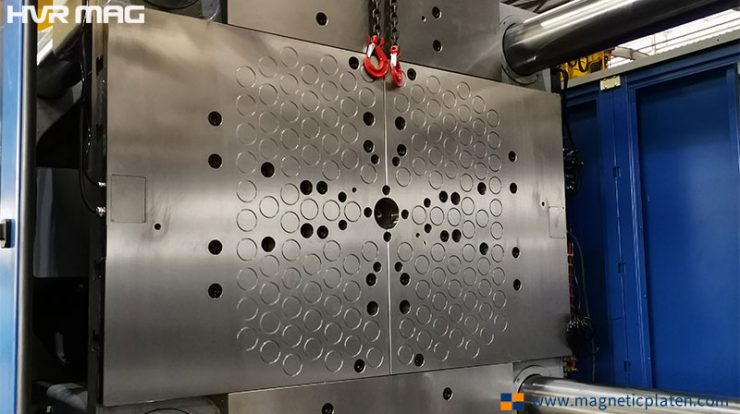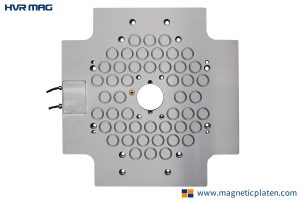
Mold clamping is very important for injection moulding machines. During the operation of an injection moulding machine, the mold is subjected to a variety of forces. For example, gravity: if the mould is not held or fixed very securely, it will fall under the force of gravity. There is also the pressure of the injection moulding machine as the mould opens and closes. If there is any looseness or misalignment in the mould, the mould will always wear and the quality of the product will be uneven.
What can be done to avoid these problems? By using the correct mold clamping method, of course. The base plate that comes with the injection moulding machine requires the use of nuts and bolts to hold the mould in place. You know that even if you buy ready-made furniture to assemble yourself, it takes a lot of time to fix the nuts and bolts, not to mention the moulds, which weigh tonnes. To save time and improve efficiency when changing moulds on the injection moulding machine, other mold clamping methods must be used.
Mechanical and hydraulic type
This led to the development of quick mould change systems. Initially, a mechanical type of mold clamping was used. The sides of the mould are not covered. However, the design is complex and suitable for small and medium injection moulding machines. The main disadvantage is the uneven force applied to the mould. The force is only applied to the centre of the back of the mould, so the mould is easily loosened at the sides, which can cause serious wear when the mould is closed. As a result, this type of mould clamping was soon phased out.
Hydraulic mold clamping is now more widely used. Hydraulic technology is very mature and has been used in industrial production since the last century. The hydraulic quick mould change system uses air clamps to hold the moulds in place. This provides a more uniform force than the mechanical mold clamping method. However, it also obscures the sides of the mould, which affects the pipe connections on some moulds.

Advantages of Magnetic Mold Clamping System
Currently, the best way of mold clamping is to use a magnetic plate. The magnetic plate is the main structure of the magnetic mould clamping system and is accompanied by a control box and operate panel. The magnetic plate has a number of electro-permanent magnetic poles evenly arranged on it. With a magnetic suction force of up to 16 kg/cm², this provides an even and strong magnetic force on every part of the back of the mould, preventing the mould from loosening or falling off.
The magnetic plate only attracts the back of the mould and does not cover the sides of mould. It has its own distance and misalignment sensors to detect the condition of the mould at all times. That ensures the safety of the mould. There is also temperature and flux sensing to ensure the magnetic plate is in optimum condition at all times. Such a safe, convenient and intelligent way of mold clamping is undoubtedly the best.
While protecting the injection moulding machine and mould, the magnetic plate can significantly reduce mould change times. With HVR MAG’s magnetic mould clamping system, you can change moulds in 3 minutes. This is thanks to our advanced electro-permanent magnet technology, which requires only a few seconds of power. The magnetic plate is quickly magnetised and holds the mould securely. By standardising the mould change process, the entire change process, including mould placement, fixing and commissioning, can be completed in a matter of minutes.
For more information about HVR MAG and our Magnetic Mold Clamping System, feel free to contact us at: export@hvrmagnet.com






